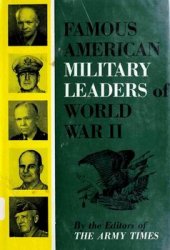The looming invasion of France, American dissatisfaction with the course of the strategic air offensive, and the need to coordinate the heavy bomber forces, now striking from Italy as well as from England, forced changes in the command arrangements and strategy governing the bomber effort.
To control the Allied Expeditionary Air Forces, which was the name of the tactical air operations for Operation Overlord, a headquarters was activated on
November 25. Its commander, Air Marshal Sir Trafford Leigh-Mallory, was disliked and distrusted by many British officers, and by most Americans other than Eisenhower. Leigh-Mallory would control the British Second Tactical and U. S. Ninth air forces. His precise authority beyond that, however, was not absolutely defined.
American officers feared that Leigh-Mallory would intrude on strategic operations excessively. They wanted an inter-Allied headquarters, to control all strategic air forces operating against Germany, including RAF Bomber Command, an idea the British opposed. To coordinate their own operations and limit Leigh'Mallory’s influence, the Americans formed the U. S. Strategic Air Forces in Europe (USSTAF) on January 1. This was actually the old Eighth Air Force headquarters, renamed and put under General Spaatz, and it controlled the Eighth and Fifteen air forces. Vlllth Bomber Command disappeared; its headquarters became the new headquarters of the Eighth Air Force, under General Doolittle, a man whose contribution to the development of aviation would be hard to exaggerate. Gen. Nathan Twining took over the Fifteenth. Eaker went to the Mediterranean to head the newly established Mediterranean Allied Air Forces. He and others considered this a sort of demotion, but it is now known that Taker’s transfer was instigated by Eisenhower. He had nothing against Eaker, but preferred the air commanders who had served him well in the Mediterranean. They continued to serve him well in 1944 and 1945.
The Americans pressed for the revision of the directive of June 1943, against weakening British resistance. In mid-February the Combined Chiefs of Staff issued a new directive governing the strategic air forces. Their overall mission remained the “progressive destruction and dislocation of German military, industrial, and economic system, the disruption of vital elements of lines of communication, and material reduction of German air combat strength by successful prosecution of Combined Bomber offensive from all convenient bases. There were no phrases about attacking enemy morale, the convenient loophole through which Harris had wriggled before. The primary objective was the German air force; attacks on fighter and ball bearings production shared an equal first priority. Second priority, under this objective, went to “installations supporting the German fighter force. Attacks on V-weapons (Crossbow) had third priority, followed by attacks on Berlin and other industrial areas, when weather was unsuitable for operations against the primary objective. Allied forces in the Mediterranean would strike cities, transportation targets, and other objectives in Southeastern Europe, when conditions for operations against the German air force or in support of operations in Italy were impossible. (The Allies hoped to encourage the Axis satellites, especially Romania, to get out of the war.) Compared to the directive of June 1943, this proved short lived. The Combined Bomber Offensive had only a few weeks to run. Operations designed to directly prepare for Overlord would be needed."




 World History
World History









